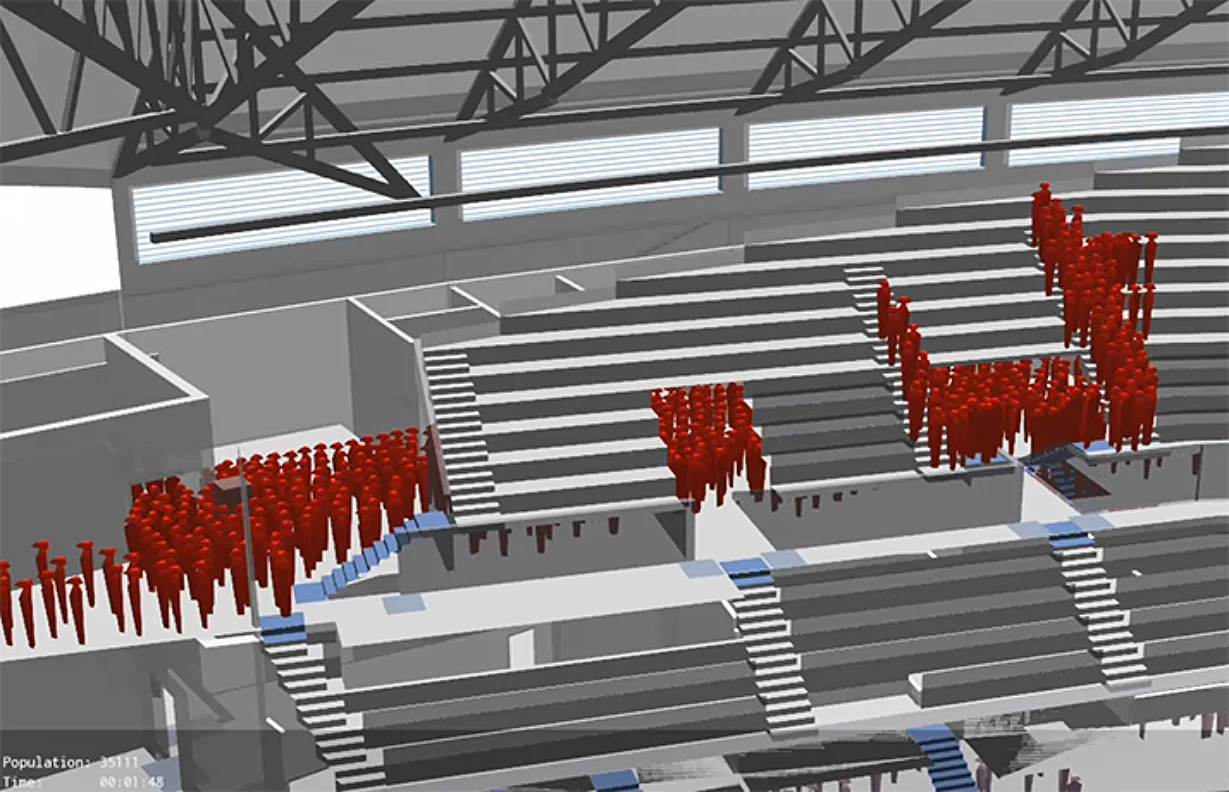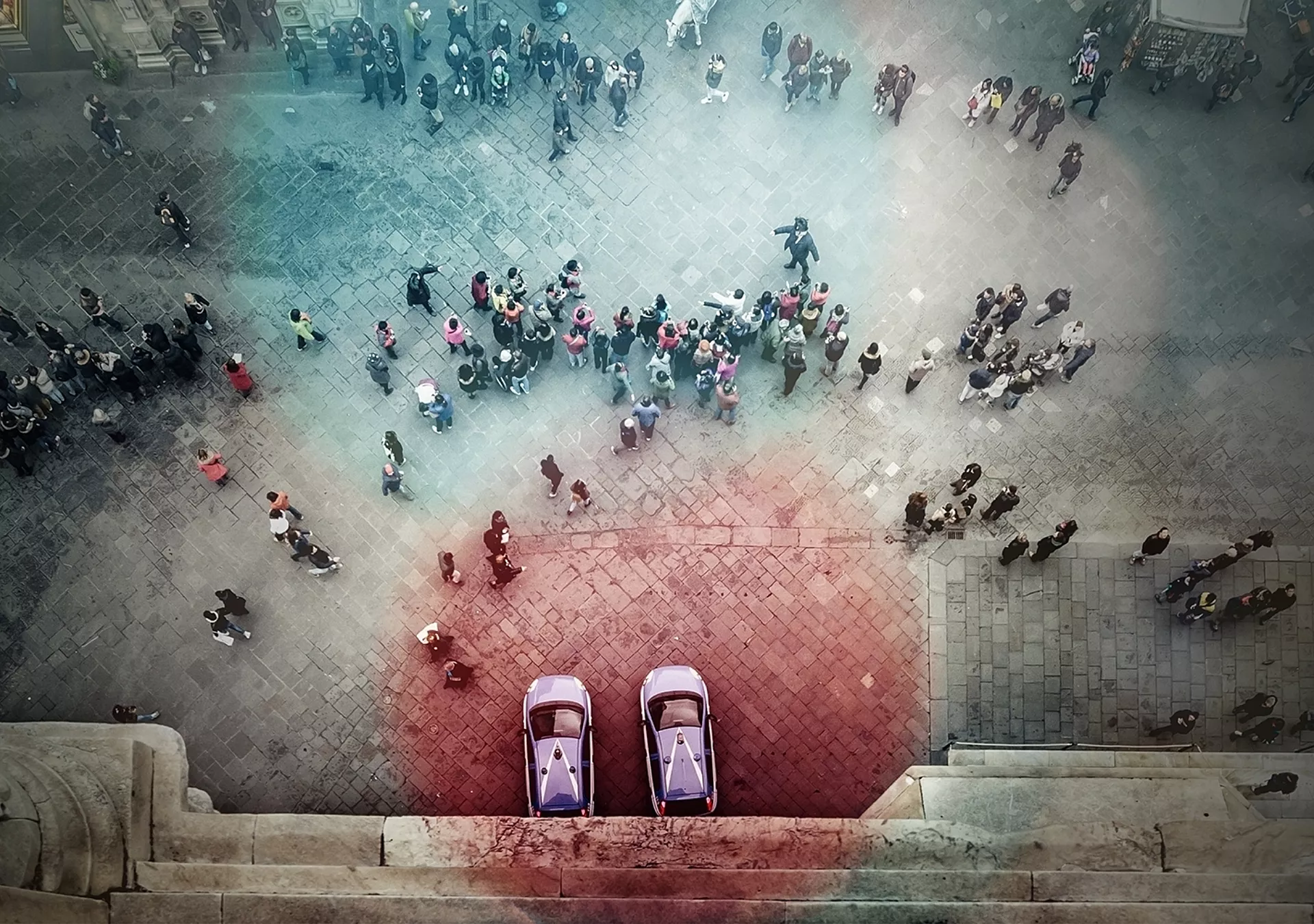
Pedestrian + Evacuation Modeling
Our pedestrian modeling tools help you assess the occupant movement in new buildings and existing facilities.
Predicting human behavior to help save lives in an emergency
Knowing the performance of your facility during day-to-day operations is critical to understand. Whether it is a concert hall, airport ticketing or a train station platform; circulation capacity and space is important to the overall efficiency of the building. Visual queues such as effective wayfinding, location of fare machines, design and location of security checkpoints and queue systems play a key role.
Modeling can help you simulate human behavior when subjected to smoke movement and physical barriers such as security gates and ticket kiosks. By accounting for these scenarios, we can help you identify potential modifications to inform security, emergency response, daily operations and improve life safety compliance.

Pedestrian Modeling
Predicting pedestrian behavior and how queues influence occupant behavior can help inform your design. Our pedestrian modeling tools help you assess the occupant movement in new buildings and existing facilities. You will be able to simulate a range of scenarios with varying origins and destinations and complex connection paths. Our visual 3-D tools help you alleviate pinch points and optimize efficiency, providing an effective circulation network.

Evacuation Modeling + Performance-Based Design
It's important to understand how people move in emergency events. We use computational evacuation models that provide 3D simulations as well as a variety of movement and congestion data. We use this data to assess the adequacy of an egress design, examine alternative architectural design and security screening activities. We identify critical events, informing our approach toward performance-based design. We also use these models within the context of emergency preparedness to evaluate severe weather, bomb threat, active shooter and other emergency events.

Emergency Management
We use timed egress modeling to evaluate crowd movement scenarios, both during normal building usage and special events, to estimate the impact of security barriers and checkpoints as well as the impact of events such as fires, bomb threats and active shooter scenarios.

Guided Evacuation
During emergency events, dynamic exit signage helps to re-route occupants in real-time. We use model predictions to determine optimal paths and provide direction in all corridors, stairways and junction points in the building.
Project Profiles

Helsinki Airport Extension
Awarded as Best Airport in Europe 2023, our team of experts worked on the fire strategy plan for Helsinki Airport.
Find your Expert
Will Fletcher
Global Service Line Leader, Smoke Control
Will Fletcher
Global Service Line Leader, Smoke Control
MS, Fire Protection Engineering, BS, Civil Engineering, PE: CA, MN, TN, Design-Build Professional®, Project Manager Professional (PMP)
Anil Kapahi
Director, RDT+E
Anil Kapahi
Director, RDT+E
PhD, Mechanical Engineering, BS, Mechanical Engineering, Member, Member, Member
Dr. Ankit Sharma
Lead Research Consultant
Dr. Ankit Sharma
Lead Research Consultant
PhD, Mechanical Engineering, Hydrogen safety (PgCertPD), Member, Society of Fire Protection Engineers (SFPE), Member, National Fire Protection Association (NFPA)
Jessica Wright
Senior Fire Engineer, Manager
Jessica Wright
Senior Fire Engineer, Manager
MEng, Fire Engineering, BE, Civil Engineering, CPEng: New Zealand, Chartered Member, Engineering New Zealand, Chartered Member, Society of Fire Protection Engineers (SFPE)
Sami Takieddin
Senior Fire Safety Engineer
Sami Takieddin
Senior Fire Safety Engineer
International Master in Fire Safety Engineering, Master of Refrigeration Engineering, Bachelor of Mechanical Engineering,






